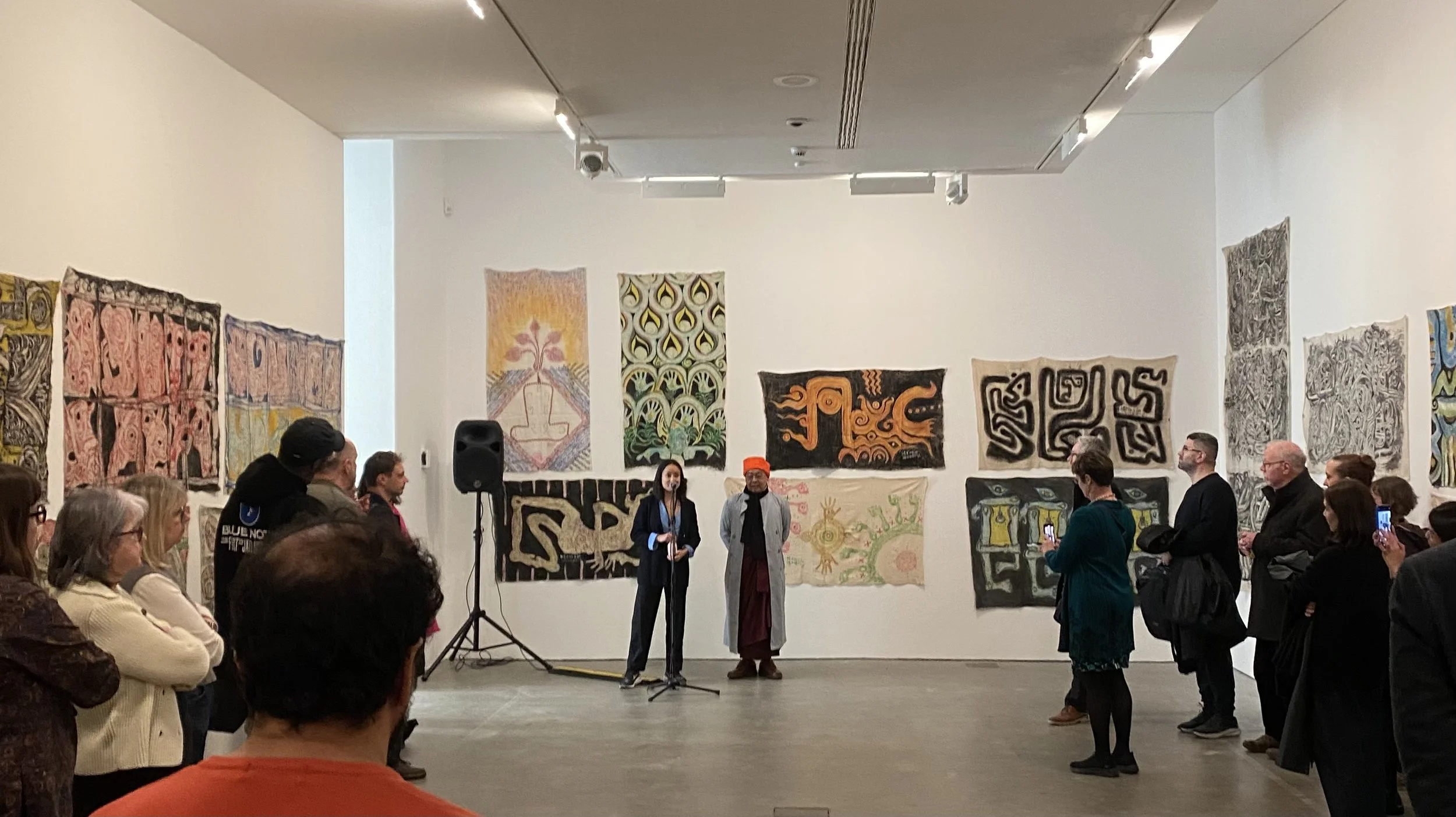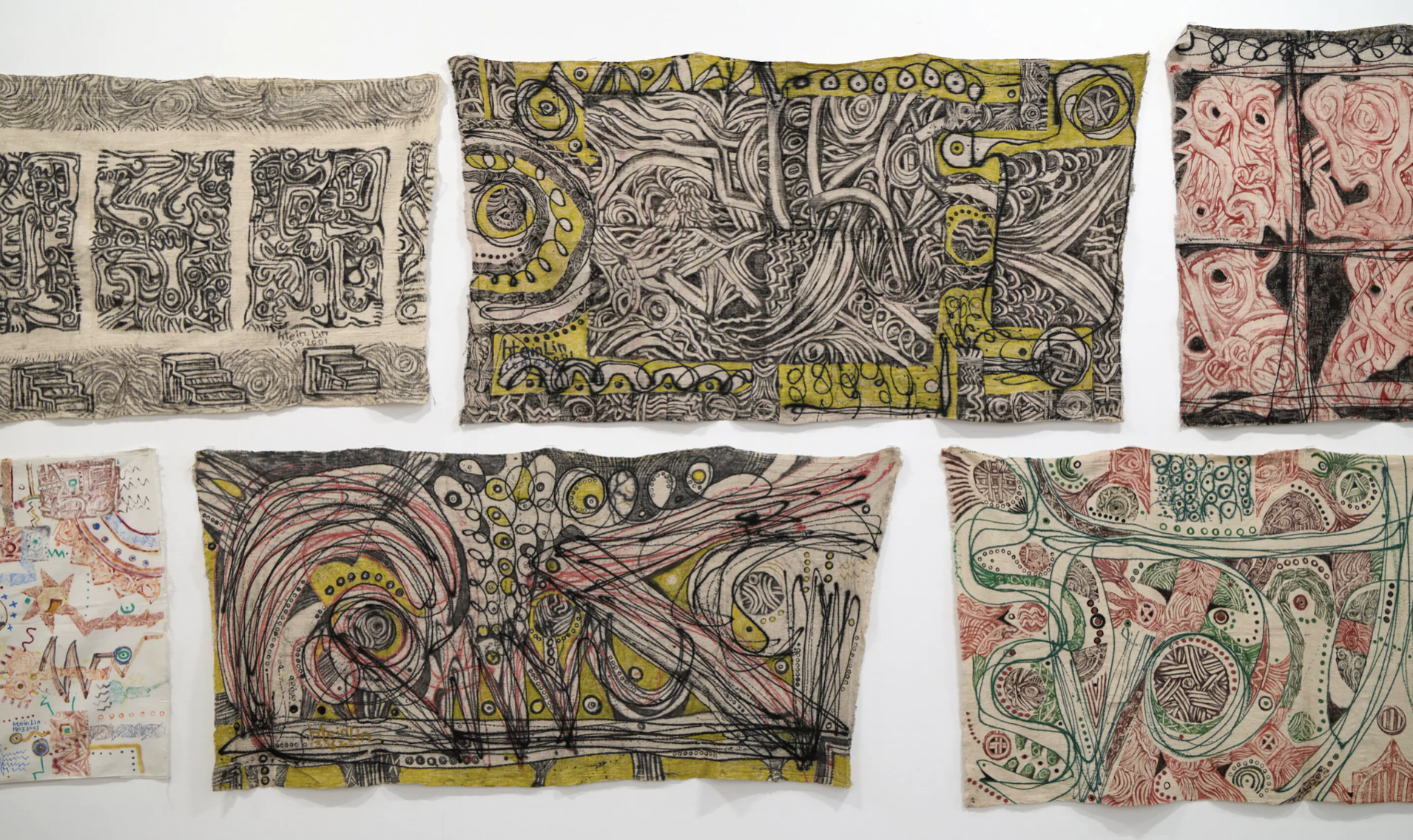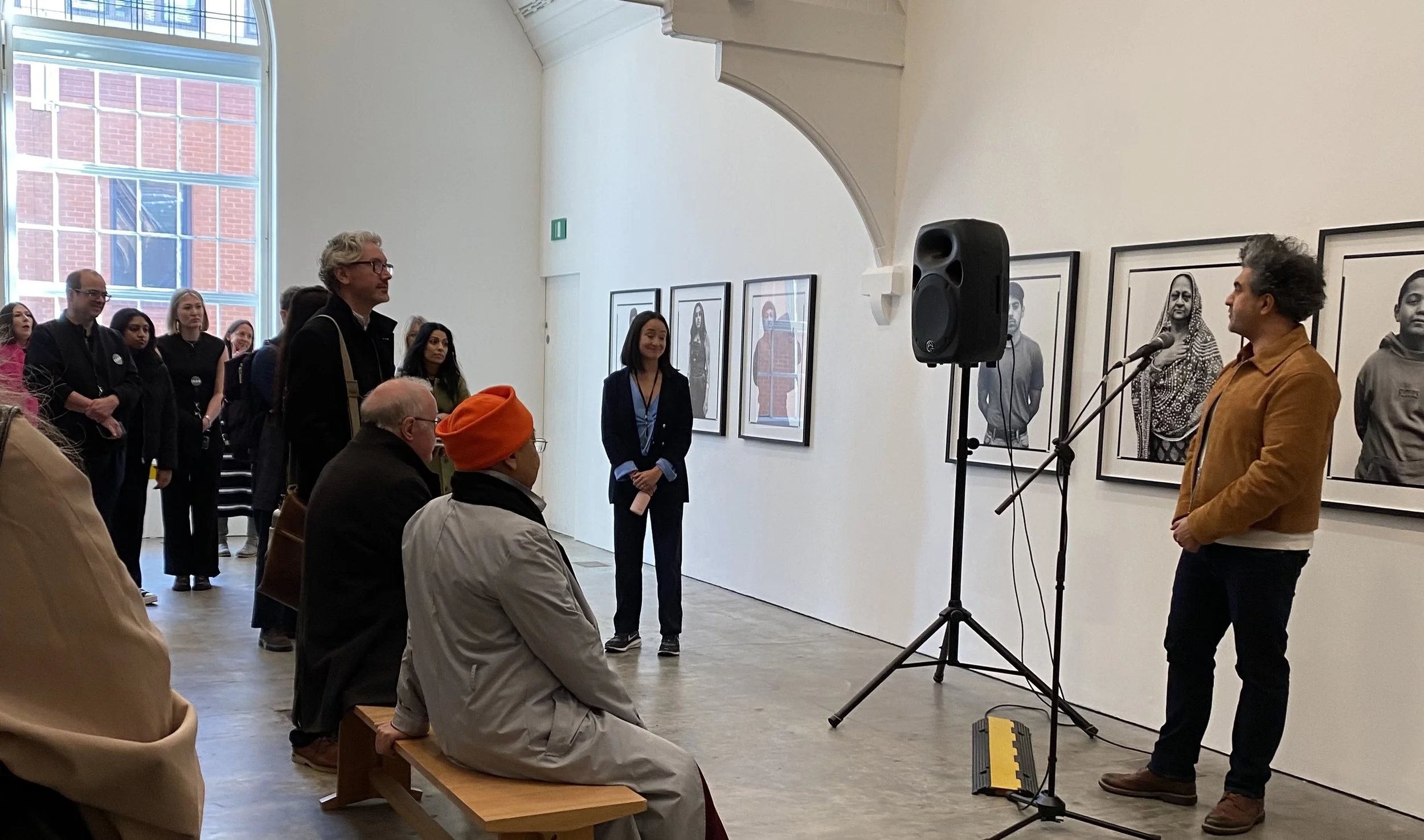A testament to engaging with diverse communities: Ikon Gallery, Birmingham.
Raphael Roy Taylor
Birmingham’s Ikon Gallery has been at the forefront of contemporary art for 60 years now. Its founding ideal, to be ‘an antithesis to exclusive art establishments and galleries’ remains true today, manifested in two incredible exhibitions. As museums nationally attempt to address the broader cultural landscape of today, making their collections and displays relevant to a modern and diverse audience, I had the opportunity to discuss the gallery’s programme of engagement with Linzi Stauvers, Artistic Director for Education.
Ikon’s first floor features an incredible display, almost floor-to-ceiling, from Htein Lin, an artist currently trapped in his native Myanmar. Entitled ‘Escape’, the dense hang not only gives the main space a feeling akin to a traditional long gallery, but it serves to outline the diversity of Lin’s work. Every work is created on a large canvas (without a frame), and finger-painted, yet is unique: from fiery dragon-like creatures to floral patterns to intricate monochrome works.
That many paintings in the show were “created between the late 1990s and mid-2000s while the artist was a political prisoner”, without access to resources and in almost constant pain further highlights the strength of his artistic vision. Meditation as part of Lin’s Buddhist faith plays “a big part of his practice”, enabling him to enter a space beyond his own physical suffering in order to create such unique work. New paintings respond to Birmingham as a city, depicting its industrial heritage and diverse, constantly evolving present.
In addition to this, the artist collaborated with HMP Grendon prison inmates, who already have a connection to Ikon through its artist residency programme. Although Lin was not able to physically guide the inmates, (he remains trapped in Myanmar), they were able to create a wide range of works, including soap sculptures and portraiture. The “shared experience in incarceration” connected Lin with the prisoners, with the aim of providing the inmates “a window onto the world”. Grendon is unique, as it is the UK’s only example of a therapeutic prison community, providing group-based therapy, and with around 70% of inmates serving life sentences as of 2008.[1] Ikon’s collaboration with them has been fascinating, not just for the work done between prisoners and successive artists in residence, but for the ability of a community to shape work currently on display in such a nationally significant space.
Mahtab Hussein’s exhibition on the second floor continues this theme of engaging with communities. Focusing on the city’s significant Muslim population, he takes the “Project Champion” surveillance camera program from over a decade ago as a starting point, which involved "over 200 cameras in the area", as part of the Prevent program. This extreme level of government surveillance focused on Birmingham’s 160 mosques, which Hussein documented and displayed as a huge grid, dominating the gallery wall.
The exhibition’s title, ‘What did you want to see’, a direct response to Birmingham’s Muslim community’s “feeling of being watched”, with the intent to “break with certain stereotypes and expectations” that might surround perceptions of the community. This is exemplified in Hussein’s series of portraits of “women and men, families and individuals within the community’, all in black and white. The intersectionality and uniqueness of every portrait significantly undermines what stereotypes of the community a viewer might have, and this space is complemented by an area that invites visitors to engage in prayer. One comes away with a distinct sense of Birmingham’s Muslim community, entirely separate from those promulgated by our media over decades.
Ikon’s diverse programme of outreach sets it apart from other galleries, as this feels less performative and far more engaging than the typical.
For example, for their youth programme, the gallery utilised a heritage barge Slow Boat,which travels around Birmingham’s canals, working with around “seven hundred young people” from art schools and colleges to educational institutions with alternative needs. Birmingham’s huge network of canals means that Slow Boat is able to travel to these locations, facilitating weekly dialogue sessions and creative classes.
Past projects, such as Start the Press reveal more about Ikon’s uniqueness as an arts space focused on engagement. It involved borrowing an "antique printing press”, which had a prior history of being used for printing "maps of empire", with its use at Ikon highlighting two "completely polar opposite uses". The project commissioned "eight printmakers in residence" to create new prints on the machine "live in space’, a huge departure from our conceptions of an art gallery as a space to display art, not create it.
Ikon’s new exhibitions complement its programme of accessible engagement in a way that feels not manufactured as they seem to do in almost every major gallery, but deliberate and authentic. It was a real joy to attend.
On the 17th of May, see Htein Lin’s wife and former Ambassador to Myanmar Vicky Bowman in conversation with Melanie Pocock, Artistic Director of Exhibitions.
[1] https://www.communitycare.co.uk/2008/08/22/grendon-prison-a-model-for-therapeutic-care/




